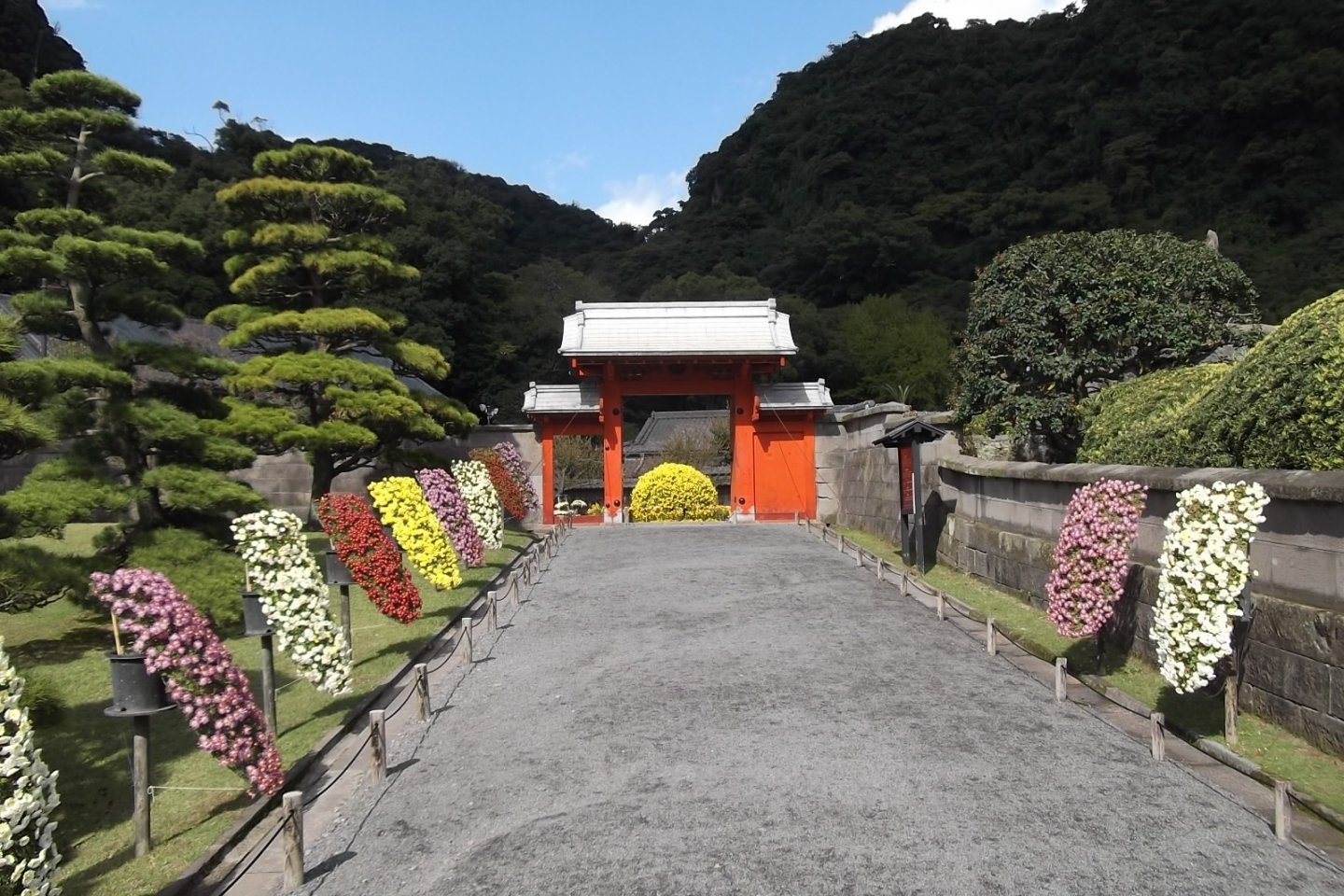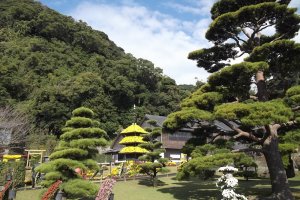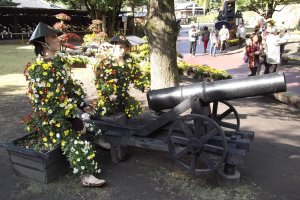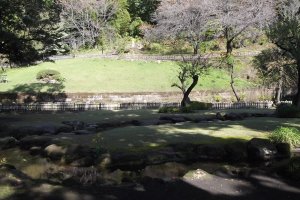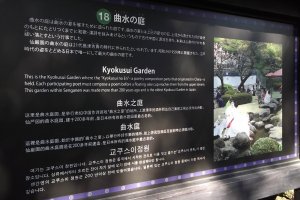The history of Kagoshima is largely about the Shimadzu family, with scholars, politicians, warriors, reformers and modernizers among their generations. Built in 1658 as the family villa a short drive south of the city, Sengan-En is a beautifully landscaped stroll garden, especially with the 'borrowed scenery' of Kagoshima Bay and Sakurajima as backdrop.
You're welcomed at the entrance by a thumping big cannon, one of a number of military artefacts incongruously dotted around. I was there at the time of the annual Chrysanthemum Festival (held every November), so there were displays of potted flowers near the entrance, and a number of the garden's features were completely swathed in colorful blooms, including some artillerymen mannequins looking unimpressed with their new uniforms.
It's very relaxing to just walk slowly round the garden: there are smooth lawns and stone lanterns, carefully pruned trees and topiary, unfussy pavilions and monuments, and a couple of mannequins from Atsuhime, an NHK TV drama which was partly shot here. Go beyond the Shimadzu family residence in the center of the garden, and the terrain becomes more diverse, while no less peaceful.
There are shady trees at the base of a hill at the rear of the garden, a large grove of tall, swaying bamboo trees, and the Kyokusui Garden, where a fun-sounding event is held: a poetry competition in which people have to compose a haiku poem within a time-limit set by a sake-cup floating down the stream around the garden.
If you feel like a climb, there are steps leading through the woods up the hill, which don't take as long as the signs warn you. You'll pass the site of a former Waterfall-Viewing Pavilion, though the waterfall isn't much to see and I had to stretch my neck to get even a glimpse; continue up and you'll come to rest area at the top with a good view out over the bay to Sakurajima.
For an extra ¥500 you can take a twenty-minute guided tour of the residence; it's given in Japanese but you'll get a brief English guide sheet. This gives you a chance to see how the Shimadzu family lived, admire the well-preserved interior, and relax at the end over green tea and sweets.
There's quite a lot to see, so you may need somewhere for a break or meal, and you have a number of options for both. Just behind the Shimadzu residence is the Ryurei Teahouse, while close to the entrance is Shofu-Ken restaurant, where I had a tasty curry for lunch and admired the view of Sakurajima again.
Between Shofu-Ken and the entrance is a building with a Kagoshima noodle restaurant, another restaurant selling local specialties, and a souvenir shop selling teas and crafts, many of them with cat designs. There are also two more souvenir shops by the main path near the entrance, selling traditional local Janbo-Mochi confectionery among a range of other goods.
Your ticket also includes admission to a small museum in a separate building, which is home to a big jumble of historical artefacts: there are military shells, glassware, palanquins, industrial machinery and suits of armor, not in much evident order, though it may be clearer if you can read Japanese. More interesting for me was the glass factory next door, where I could watch the exquisitely beautiful local Kiriko cut glassware at every stage of its creation, then admire displays of finished items in the neighboring gallery-shop.
If you don't have your own transportation, the easiest way to get to the gardens is on the Kagoshima City View Bus, which takes about twenty or thirty minutes from the city, depending on where you board. It's definitely worth visiting for the restful scenery, the interesting history and crafts, and relaxing overall atmosphere.
